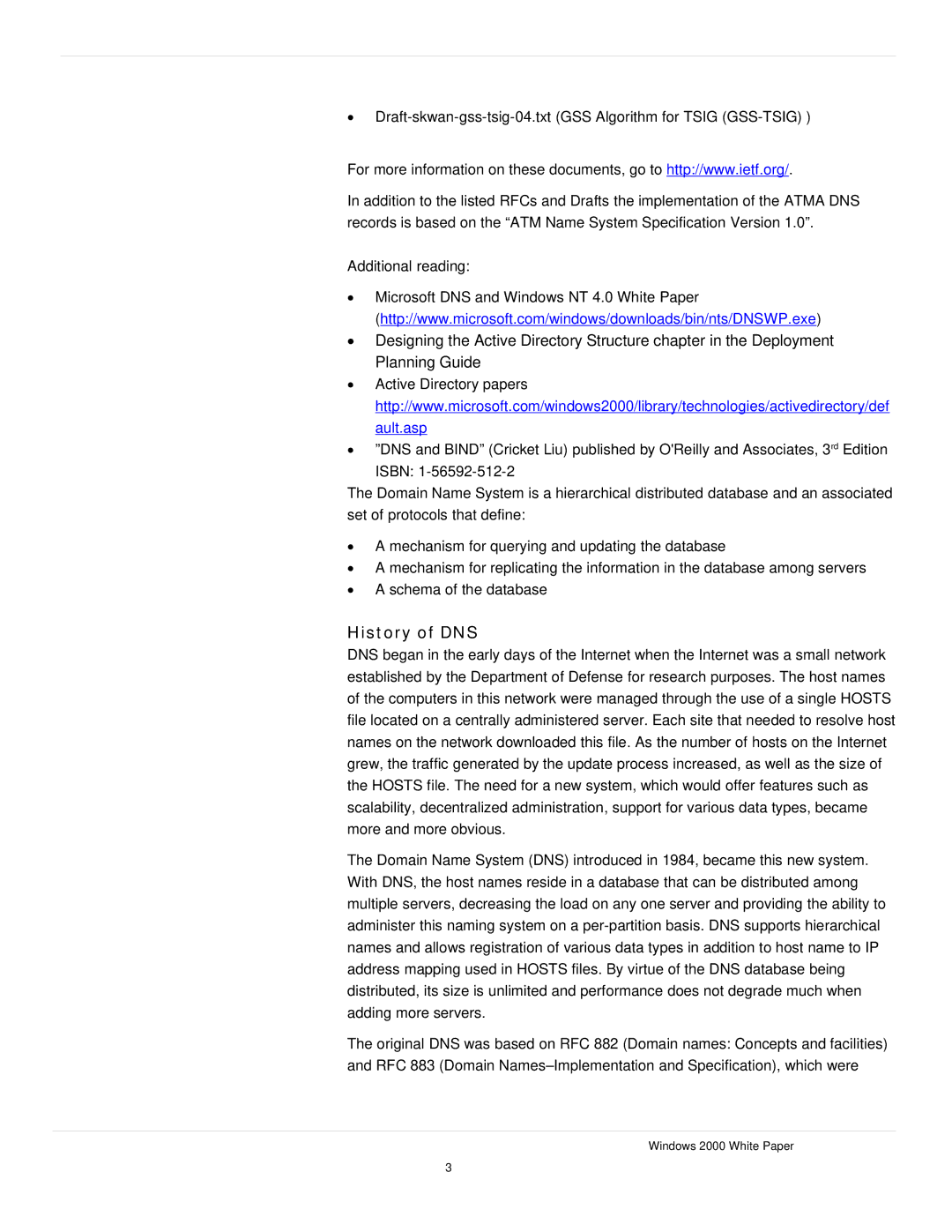
•Draft-skwan-gss-tsig-04.txt (GSS Algorithm for TSIG (GSS-TSIG) )
For more information on these documents, go to http://www.ietf.org/.
In addition to the listed RFCs and Drafts the implementation of the ATMA DNS records is based on the “ATM Name System Specification Version 1.0”.
Additional reading:
•Microsoft DNS and Windows NT 4.0 White Paper
(http://www.microsoft.com/windows/downloads/bin/nts/DNSWP.exe)
•Designing the Active Directory Structure chapter in the Deployment Planning Guide
•Active Directory papers http://www.microsoft.com/windows2000/library/technologies/activedirectory/def ault.asp
•”DNS and BIND” (Cricket Liu) published by O'Reilly and Associates, 3rd Edition
ISBN:
The Domain Name System is a hierarchical distributed database and an associated set of protocols that define:
•A mechanism for querying and updating the database
•A mechanism for replicating the information in the database among servers
•A schema of the database
History of DNS
DNS began in the early days of the Internet when the Internet was a small network established by the Department of Defense for research purposes. The host names of the computers in this network were managed through the use of a single HOSTS file located on a centrally administered server. Each site that needed to resolve host names on the network downloaded this file. As the number of hosts on the Internet grew, the traffic generated by the update process increased, as well as the size of the HOSTS file. The need for a new system, which would offer features such as scalability, decentralized administration, support for various data types, became more and more obvious.
The Domain Name System (DNS) introduced in 1984, became this new system. With DNS, the host names reside in a database that can be distributed among multiple servers, decreasing the load on any one server and providing the ability to administer this naming system on a
The original DNS was based on RFC 882 (Domain names: Concepts and facilities) and RFC 883 (Domain
Windows 2000 White Paper
3
